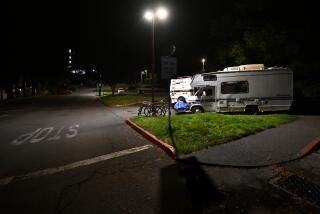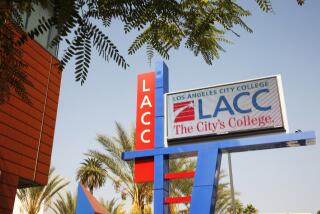Let’s make textbooks affordable
Sadly, today’s college students have been handed a much worse deal than their parents’ generation enjoyed in California.
They’re being forced to pay loads more for arguably less. Even if their parents are helping, many students are burdening themselves with loans that they could still be paying off when their own kids leave for college.
For generations, California prided itself on offering very affordable, quality higher education for any youngsters with the energy, discipline and ambition to seek a college diploma. The return on the public’s investment was a professional workforce that fueled California’s economy and spurred innovation.
California has allowed that affordability to erode. Fingers can be pointed at many places: Recessions that reduced tax revenue. The public’s anti-tax mood. Our failure to appreciate what this state once had.
Consider: In 1980, the average annual cost of undergraduate tuition and fees at the University of California was $776. Today, it’s $13,218. That’s an 18% increase over last year, which was 14% higher than the previous year, which was 23% steeper than the year before that.
Add up room, board, books and pocket change and you’re easily into 30-plus grand.
In the California State University system, average annual fees were $160 in 1980. Now they’re around $6,500, up 23% in the last year. Another hike is on tap for next September.
At community colleges, there were no academic fees before 1984. That year, a $5 per unit charge was imposed. Now it’s up to $36; figure $864 annually for a full load. Sure, that’s a bargain. But it’s still a difficult reach for a single mom working a part-time job.
There’s no happy ending in sight here — not concerning tuition and fees, not with tax revenue still falling short because of the lousy economy.
“At our first opportunity when the economy recovers, we need to restore funding to all three [college] systems,” says state Senate leader Darrell Steinberg (D-Sacramento).
“But we can’t wait for that day to happen,” he continues. “We have to do the best we can with the tools we have to try to make things better for students and families caught in a squeeze.”
Steinberg’s answer: Substantially reduce the cost of textbooks.
Folks middle-aged and older may be shocked to learn the going rate for new textbooks. And used ones aren’t always available.
Statistics and math textbooks can climb into the $200 range.
Steinberg says that the average college textbook in 2010 cost $104, a 24% increase from five years before. Between 1986 and 2004, textbook prices rose 186%, double the inflation rate. Students can expect to spend more than $1,100 a year on books.
“I’ve got nothing against people making money,” Steinberg says, referring to publishers. “But we are talking about public institutions here, institutions that are being threatened in many ways.”
Steinberg says he has been inspired by student Occupiers protesting rising education costs.
So he intends to introduce legislation aimed at forcing the price of textbooks down to about $20 in printed form, or free online.
That might seem like a pipe dream, but it’s already being achieved in some spots around the country.
It involves what’s called digital open-source textbooks. The textbook material is housed in a cyberspace repository that is freely accessible to faculty and students. By clicking, cutting, copying and composing, professors can customize their own textbooks. Or they can select a generic course book, free of copyright restrictions.
Steinberg’s bill would establish a council to select 50 courses. Bids would be requested to produce the textbooks. They’d be housed in a “California open-source digital library” and be available to all. Students could order a printed copy for $20 or obtain an online version free.
The state’s start-up cost could be $20 million, Steinberg says, but students would save at least $1 billion a year. “We’ll find a way” to get the money, he vows.
Cal State Chancellor Charles B. Reed thinks it’s a great idea.
“Some of these textbooks are ridiculous,” Reed told me. “What ticks me off with some of the publishers — far as I know, algebra and calculus haven’t changed in 500 years — is that they come out with a new edition every other year. And the way they hoodwink you is to put a DVD in the back with shrink wrap around it and charge you $200.”
Reed says CSU already is trying to develop open-source textbooks, but Steinberg’s legislation “will show the publishers we’re serious about this.”
They should already know.
At Rice University in Houston, a repository called Connexions houses 1,100 open textbooks. The outfit was created by Richard Baraniuk, an electrical engineering professor. “All are completely free,” he says. But half the students buy printed copies for under $30.
One of the books is “Collaborative Statistics,” coauthored by Barbara Illowsky, a mathematics professor at De Anza community college in Cupertino. She wrote the book for profit but later made it available to Rice. At De Anza alone, she estimates, students save $250,000 a year on her book.
“When you think about it,” she says, “that’s much better than any financial aid package.”
There are barrels of foundation money backing this movement. One foundation is “20 Million Minds,” referring to the number of U.S. college students. It was created by billionaire inventor and philanthropist Gary K. Michelson of Los Angeles.
“Gary’s passion is that he doesn’t understand why students have to pay $150 for a book in this day and age,” says foundation President Dean Florez, a former Democratic state senator.
Free textbooks couldn’t make up for soaring tuition, but it would be a start.
More to Read
Start your day right
Sign up for Essential California for news, features and recommendations from the L.A. Times and beyond in your inbox six days a week.
You may occasionally receive promotional content from the Los Angeles Times.







